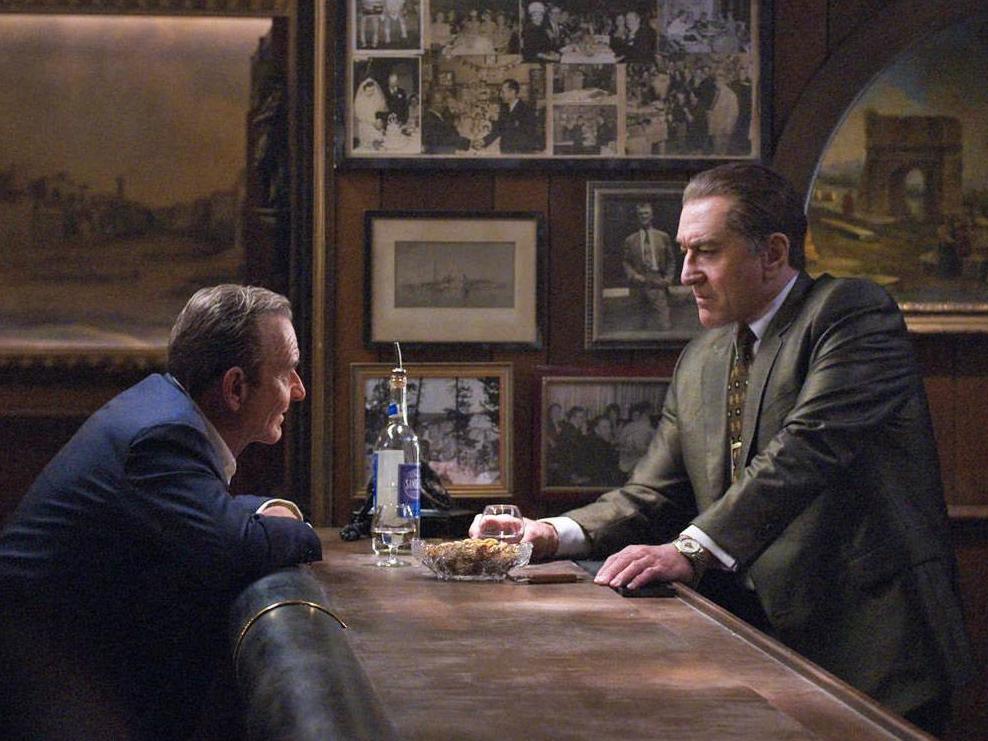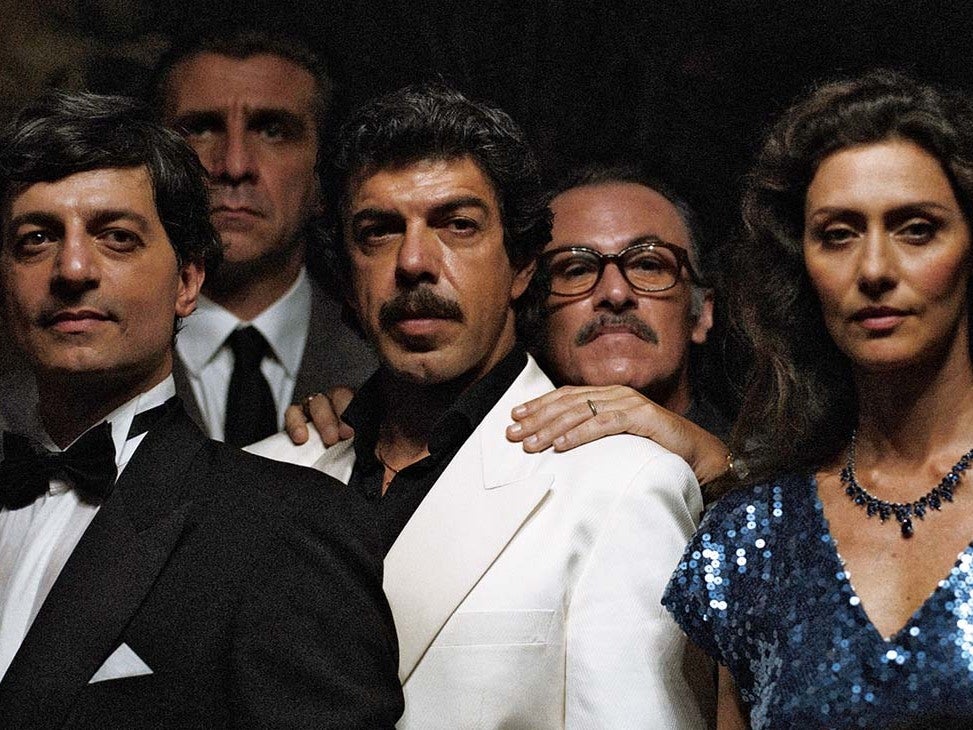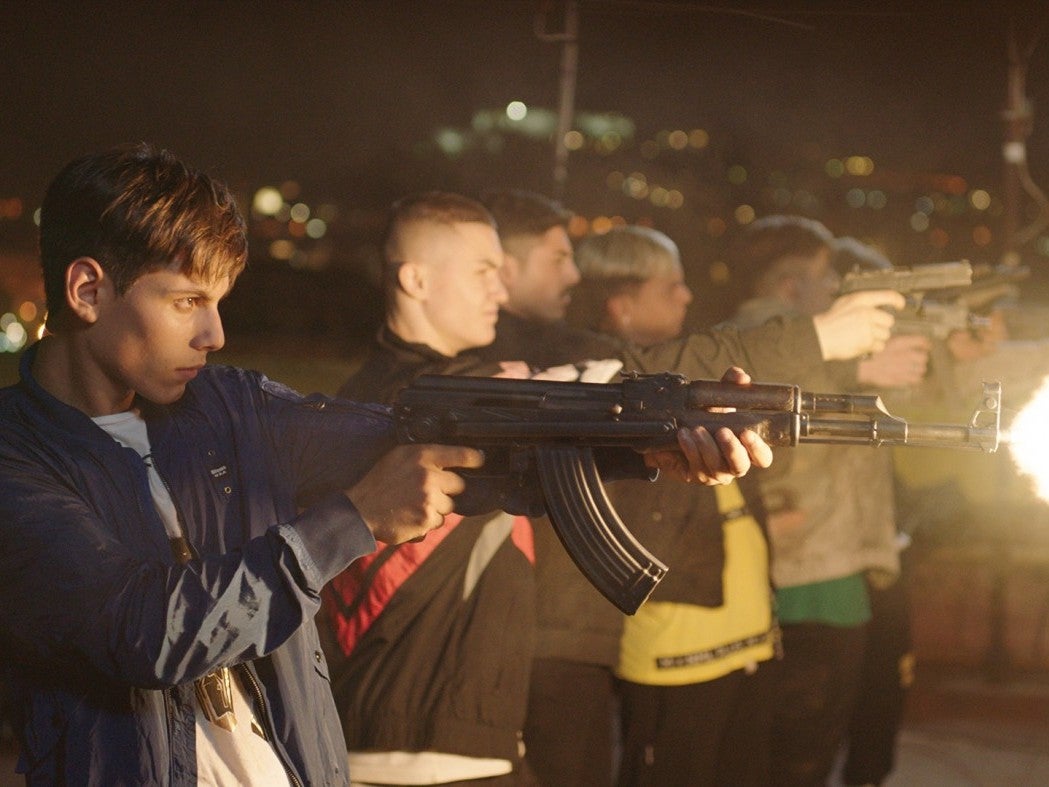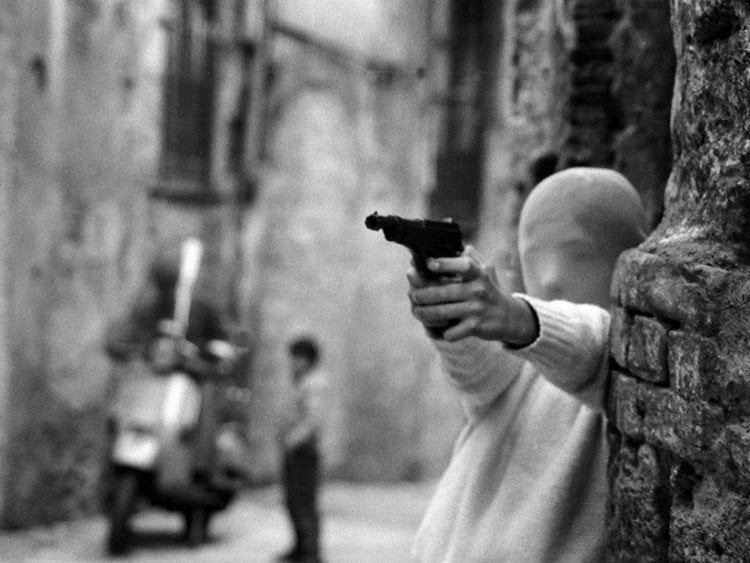The Hollywood Mafia: What Martin Scorsese has always got wrong about life in the Mob
While Scorsese waxes nostalgia with his Netflix Mob epic ‘The Irishman’, a trio of Italian filmmakers have set out to reflect the ugly realities of Mafia life, writes Nick Hasted

Your support helps us to tell the story
From reproductive rights to climate change to Big Tech, The Independent is on the ground when the story is developing. Whether it's investigating the financials of Elon Musk's pro-Trump PAC or producing our latest documentary, 'The A Word', which shines a light on the American women fighting for reproductive rights, we know how important it is to parse out the facts from the messaging.
At such a critical moment in US history, we need reporters on the ground. Your donation allows us to keep sending journalists to speak to both sides of the story.
The Independent is trusted by Americans across the entire political spectrum. And unlike many other quality news outlets, we choose not to lock Americans out of our reporting and analysis with paywalls. We believe quality journalism should be available to everyone, paid for by those who can afford it.
Your support makes all the difference.The Irishman takes the Mafia to the end of the line. Martin Scorsese’s masterful, unsentimental Mob saga is a reminiscence by hitman Frank Sheeran (Robert De Niro) from his retirement home. All his fearsome friends of the post-war years are gone, many from bullets in the head, but the rest by more natural means. Informed by the FBI that his lawyer is dead, the octogenarian Sheeran barks: “Who did it?” “Cancer, Frank,” he’s told. Other killers wither into benign enfeeblement in jail. This is like our last sight of The Godfather’s Don Corleone (Marlon Brando) as he dodders in his garden, having lived a full life.
Scorsese’s gimlet-eyed elegy applies to the Mob in Hollywood as a whole, where the Mafia has become an exercise in nostalgia, part of an Americana cavalcade also including, as The Irishman does, the Kennedys and Castro. It’s like a shadow version of The Beatles story, divorced from modern criminal reality. Using stars heavy with gangster history, the film is a self-conscious summation of this era. Scorsese lines De Niro up alongside Al Pacino’s bombastic Jimmy Hoffa, Joe Pesci’s menacing “Quiet Don” Russell Bufalino, and Harvey Keitel’s wry capo. It’s a last stand for this unrepeatable cast, in the post-war Mob that made their names.
When The Irishman premiered at the London Film Festival, though, several Italian films screening alongside it, from magisterial Oscar candidate The Traitor to Piranhas’ intimate tale of teenage gang life, offered contrastingly urgent Mob stories. They detail the Mafia’s social cost in its birthplace, where its power remains grimly relevant.
That hasn’t been true of the American Mafia since its code of silence crumbled in the Eighties, and Italian-American integration into wider society reduced new recruits. When it became soft, informant-riddled FBI fodder, the deadly aura that made The Godfather seem a crepuscular horror film to 1972’s audiences was similarly lost. Later sagas GoodFellas, Casino and The Godfather Part III all ended in the early Eighties, as if not wanting to embarrass their subjects. John Travolta’s Gotti (2018) showed they were wise to stop there, as it failed to find lustre in the most famous later Mob boss, shoddy Don Vito wannabe John Gotti.
These reduced circumstances were the subject of the first episode of HBO’s The Sopranos in 1999, in which young mobsters such as Christopher (Michael Imperioli) watch and wistfully mimic GoodFellas, and Tony Soprano (James Gandolfini) despairs he was born too late. This seedy reality was sadly abandoned for a more familiar operatic sweep as the series progressed. It was still too much for its inspiration, Scorsese. “I think I only saw one episode of The Sopranos,” he informed Sight & Sound this month with distaste, “because I can’t identify with that generation of the underworld. They live in New Jersey with the big houses?... They use language – four-letter words – in front of their daughters, at the dinner table? I don’t get that. I just didn’t grow up that way.” Perhaps the series’ imminent Sixties-set film prequel, The Many Saints of Newark, will be more to his taste.
The changing of the guard was also shown in Abel Ferrara’s The King of New York (1990), where the Mafia are arrogant racists clinging to a sliver of Little Italy, easily toppled by the multi-racial crew of Frank White (Christopher Walken). Tony Sirico, whose status as the most archaic of Tony Soprano’s crew, Paulie Walnuts, was defined by his greying bouffant, has become America’s classic 21st-century Mafioso, still playing bit-part heavies as he nears 80, like the last of his tribe.
That tribe still lives on in rude, vicious health in Italy, in a variety of new films. Marco Bellocchio’s The Traitor equals The Irishman for sweep, lengthy dramatic grip and ironic acuity as it follows real-life Sicilian capo Tomasso Buscetta (Pierfrancesco Favino) on his path to giving evidence in 1986’s notorious “Maxi” trial of almost 500 Mafiosi. Kim Longinotto’s Shooting the Mafia is a documentary portrait of Letizia Battaglia, the Sicilian photographer who bravely recorded the Cosa Nostra’s bloody human toll. Claudio Giovanessi’s Piranhas, meanwhile, follows Matteo Garrone’s epochal Gomorrah (2008) in applying a realistic eye to teenage aspirants to Naples’ Mafia, the Camorra. All these filmmakers come from a country where, like the New York Little Italy that Scorsese grew up in and projected onto the big screen in Mean Streets (1973), the Mafia isn’t reduced to old movies to be referenced, but still infects life on every street corner.
“The Godfather is an unmitigated masterpiece,” Bellocchio readily concedes, when the last of Italian cinema’s golden age maestros meets me in London. “But when Coppola came to Italy to shoot those scenes [when Al Pacino’s Michael Corleone hides out in Sicily], to us Italians they seemed a bit superficial and naive because we know that reality from the inside. Whereas a film like Salvatore Giuliano [Francesco Rosi’s Scorsese-beloved 1962 film about Sicily’s infamous bandit] is again a masterpiece, but by somebody who knew the reality of it, so they could talk about it in a certain way. There are different directors in Italy who treated the same theme in an almost sarcastic and comical way which maybe would not travel abroad. Because you’ve got to have insiders’ knowledge in order to do that.”

Claudio Giovanessi agrees that both the original Gomorrah film and its subsequent TV spin-off, which he’s directed, have greatly influenced more contemporary Mafia portrayals. “The TV series has been broadcast in more than 130 countries,” he says, “so it certainly has brought visibility to the Mafia scene in Naples that was more or less hidden up to then. But the series is genre fiction. So whereas the setting is completely realistic, the dynamics between the characters and the way it’s told is like any other crime story. Gomorrah the film is completely different. What Garrone did – and I know because I shared his scriptwriter on Piranhas, Maurizio Braucci – was for the first time in Italy to go to Scampia, the Mafia area in Naples, and to film this huge supermarket where drugs were sold at the end of the Nineties. The Camorra he portrayed was the street, working-class Camorra. And Garrone’s film is objective. It’s as if an alien came and looked at a new world.”

Watch Apple TV+ free for 7 days
New subscribers only. £8.99/mo. after free trial. Plan auto-renews until cancelled

Watch Apple TV+ free for 7 days
New subscribers only. £8.99/mo. after free trial. Plan auto-renews until cancelled
The Traitor dramatises a similarly profound, real-life turning point. From Buscetta’s drug-running exile in Rio to his witness protection afterlife in suburban America, and taking in the merciless rampage of the Cosa Nostra’s “boss of bosses”, Totto “The Beast” Riina, it has all the pleasures of the grandest Mob epics, on either side of the Atlantic. Piccolo’s Buschetta, who, like De Niro’s Sheeran, is followed to his haunted, elderly end, and Nicola Cali as bull-like, bug-eyed Riina, are great performances in a grotesque rogues’ gallery. But Bellocchio then moves into the intimate theatre of the Maxi trial, which seems somewhere between a stage, bedlam and zoo as hundreds of Mafiosi rail and snarl from great courtroom cages. This deliberate, televised spectacle, Bellocchio believes, changed how the Mafia was seen subsequently, both on-screen and in life.
“The trial was the first of that scale,” he remembers, “and because it was televised, things that were kept hidden – and the inner nature of the Mafia is to keep things hidden from people who don’t belong – was totally exposed for public scrutiny. I presume it had an effect [on how they’ve been represented since]. Because the accused were there in plain sight. So mythology could no longer take place because you could see the reality.”

Shooting the Mafia could be a documentary accompaniment to The Traitor, with its TV footage of trials indeed demystifying Riina, whom Letizia Battaglia found to be a “shabby moron”. Her photo of boss Luciano Leggio beckoning to her with a deadly smile, on the other hand, pulses with evil charisma. She was shaking as she shot it. Working in Palermo in the Eighties turned Battaglia into a traumatised war photographer, as a thousand were murdered in a year. Far from The Godfather’s symphonic violence, she shows the prosaic truth: the dishevelled bodies of a sex worker and her friends, left slashed and slumped in their kitchen beneath a topless calendar, or a boy witness, arms awkwardly at his side, gory holes in his head. Mafia influence is so pervasively corrosive that this becomes a civil rights film for Sicily, where raging Nineties protests finally helped make society resist.
Piranhas, meanwhile, joins another recent, post-Gomorrah film, The Interval (2012), in showing children’s corruption by gangster culture, as 15-year-old Nicola (Francesco Di Napoli) enviously admires local Camorra capos in their designer gear. Where others might look to the Kardashians, in these streets criminal celebrities are king. Absorbing everything with wide-eyed wonder, Nicola is soon dealing coke and arranging hits, when not berating his kid brother for stealing his jam tarts. This seems sadder and truer than its American equivalents.
“It really depends on your point of view,” Giovanessi says of the choices a Mob director can make. “Bear in mind that The Godfather is a fable, that’s how Coppola put it. And if you want to make a Mafia or Camorra film, you can make a cartoon, a genre film, or a reflection on reality. With Piranhas, we wanted to show that you go into criminality when you don’t have a choice. Where there’s no work and the state is not perfect, organised crime is the only alternative. In that system, a criminal’s career is very similar to that of a football player or pop star, and great criminals like Totto Riina become role models.”

The idea that Italian Mafia films are nobly pursuing pure realism in contrast to their flashy, fantastical Hollywood cousins is anyway simplistic, not least because Italian gangsters, just like The Sopranos’ Christopher, grew up watching and imitating wild gangster movies, too.
“We tried to stay as far as we could from genre films as points of reference,” Giovanessi reflects. “But what’s interesting is where you have life imitating art, in the sense that the gangster films have had such a strong impact on people’s imaginations. For example, there’s a scene in Piranhas where Nicola cross-dresses to try to kill someone. That’s based on a true event, which might well have been influenced by gangster films. It’s hard to draw a precise line. A film that kept cropping up when we were doing research as one of [the Mafia’s own] cinematic canon is [Guiseppi] Tornatore’s Il Camorrista [1986, in which Ben Gazarra plays a romanticised version of ruthless Camorra mastermind Rafaelle Cutollo, still in jail today].”
The sad adolescent killers and victims on the Neapolitan streets of Gomorrah, Piranhas and The Interval share more with the Hackney estate gangster struggles of TV’s Top Boy than GoodFellas. The Irishman takes place in a world of killers in suits, which belongs to legend as much as history now. Its much-remarked de-ageing technology never convinces you that its characters are anything other than old, bad men with decades of blood on their hands. At least Scorsese grew up watching such men, instead of just watching movies about them. It is the last word from the last man who could say it on a shadowy American way of life.
The Irishman is in cinemas on 8 November, then on Netflix from 29 November. Shooting the Mafia is in cinemas on 29 November. The Traitor and Piranhas are not yet scheduled for UK release
Join our commenting forum
Join thought-provoking conversations, follow other Independent readers and see their replies
Comments